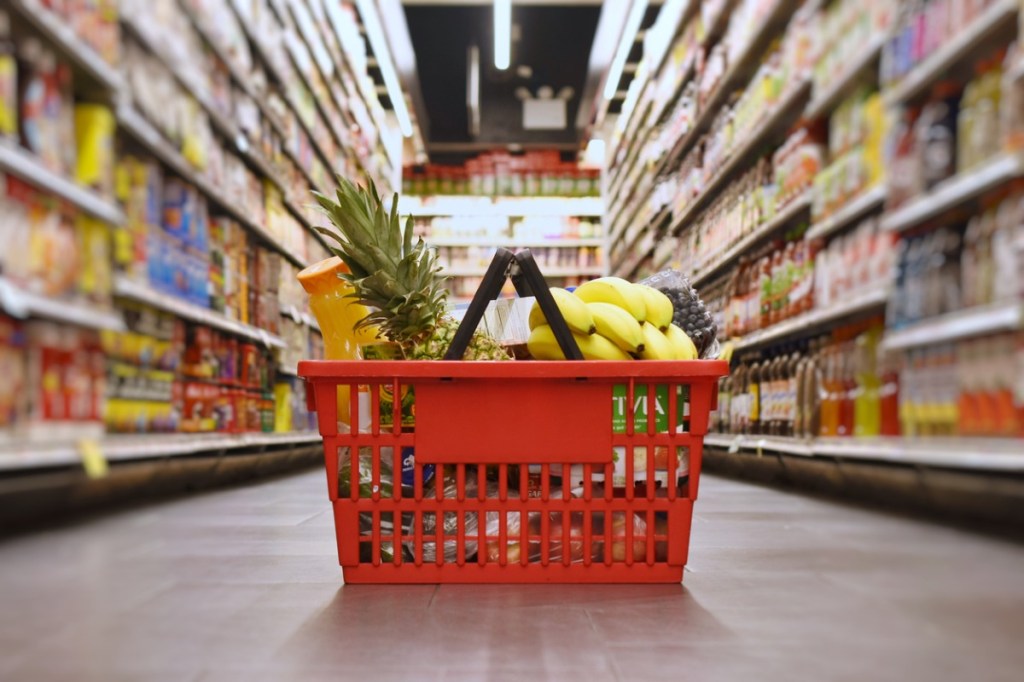The events of 2020 brought with them some of the biggest changes that we’ve seen in Australian retail in decades.
As borders closed and we moved more of our lives home, brands had to reinvent the way they engaged with shoppers, and retailers needed to adjust to an increased demand for things like home delivery and online shopping.
There was an increased demand for shopping local as people sought to support their local communities. And as social distancing overtook physical connection and re-use returned to single use; we relied on our manufacturers, retailers and brands to find innovative new ways to feed us, keep us safe and entertain us in a brave new world.
As we move into 2021, a new white paper released by IRI – Collaborating in a Brave New World: 2021 FMCG Outlook – highlights the five defining themes for growth and how behavioural change and trends instilled in 2020 will spearhead 2021.
- The acceleration of e-commerce
In Australia, online sales grew in 2020 by $8.1 billion, a total that surpasses the total two years combined (September 2019-August 2020).
There was a total online spend of $27.9 billion by Australians and this included a 9.4 per cent increase of Australians purchasing their groceries online from Coles and Woolworths (August 2019-July 2020).
When we went into our first lockdown, retailers quickly migrated to use digital platforms and major retailers ramped up their online offers, and according to IRI, by June, one in three people were shopping more online.
“Brands must be mindful of the newfound habits created and those that will persist long after. A confluence of consumer (pull) and industry/retailer (push) drivers mean that Australians are unlikely to go back to their reliance on physical stores,” says IRI.
“For the last four years, Australians have consistently cited the same frustrations and concerns about online grocery shopping. The recurring detractors are delivery costs, not getting products ordered, freshness of food, minimum spend for delivery discounts and delivery timing. Addressing these issues is crucial to optimise online sales.
“Another larger barrier is the environmental impact. While not overt in grocery e-commerce, online shopping has come under significant scrutiny for the amount of packaging and single use plastic used in the fulfilment and delivery. As we re-focus on the sustainable issues put on ice during the pandemic, this will be back on the table in 2021.”
2. Sustainability
“Sustainable innovation will be at the forefront of FMCG in 2021,” says IRI.
The catastrophic bushfires of 2020 were a devastating wake up call for all Australians who are hugely concerned about climate change.
Over the last four years, almost six in 10 of us continually expressed our intent to purchase environmentally friendly products,” says IRI.
“Brands, manufacturers and retailers must view sustainability as a strategic core pillar underpinning widespread opportunities to generate commercial growth beyond market averages. To that end, stakeholders must ensure that pandemic-induced operational challenges do not compromise sustainability goals and outcomes.
“Actual market dynamics prove that sustainably marketed products outperform conventional products. Retailers and brands will be held to account and must adopt a multi-faceted approach to sustainability for relevant and meaningful action.”
IRI highlights personal hygiene as an area of opportunity and says that suppliers that can tap into both personal care and sustainability will thrive.
3. The power of private label
According to IRI, 61 per cent of Australians say private label products are a good alternative to branded products.
“Private label risk to brands is high when differentiation and loyalty are low and financial incentive is strong. To overcome these challenges, it’s critical to understand price elasticity within specific segments – you can’t price effectively without it.
“Manufacturers must boost value beyond price to give shoppers a reason to purchase brands with a genuine connection that they feel cannot be replaced by a store branded product.”
4. Uniting all industry stakeholders
FMCG in 2021 is all about reinventing relationships and retailers, suppliers and manufacturers must be open to collaborate on new and different opportunities and challenges.
“Optimising shared growth potential will be augmented if all parties play within the retailer’s framework, collaborate on and track joint objectives, and do it all at the pace of change,” says IRI.
“Defining a shared path to growth beyond standard metrics such as sales and share growth, but through the expanded availability of customer and basket level data, allows an even deeper and more nuanced understanding of market movement.”
In 2020, we saw that opportunities for growth were seized by businesses who were agile and pivoted quickly with the changing needs of shoppers. And IRI says that consumers will continue to expect this pace of change into 2021.
5. Fast tracking technology
IRI’s white paper points to ‘The 4W’s of Shopper Profiling’: Who is shopping? What impacts purchase decisions? When they’re shopping? What’s in their cart?
As more of us shop online it’s increasingly important for retailers to understand their shopper and have their needs at the heart of everything they do.
“The most successful brands and retailers invest in understanding their customers to segment and prioritise initiatives. Utilising granular POS information, shopper panel and retailer customer data provides multiple ways to segment shoppers, understand what’s most important to them for effective communication and deliver the right product, in the right place, at the right price and at the right time.
“The resilience of Australians in facing the unprecedented changes to our lives, our businesses and our economy is the legacy of 2020 – and many of our new behaviours will last.
“Some trends suffered such as sustainable transformation, which took a back seat as we moved from re-use to single use, but we also learned safer new ways of living in a totally different world – from how we socialise to how we shop.
“Many of these changes in our behaviour have significant upsides for the way we live and will continue to define how retail and FMCG must respond as we move into 2021.”

